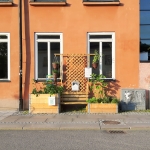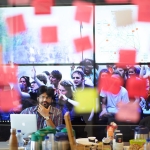The Polacksbacken campus area in Uppsala will undergo major changes in the next years since a fourth part of the Ångström Laboratory will be built on the parking area north of the laboratory. This building will accommodate the Department of Information Technology (ITC) now in the previous military barracks next to the Ångström Laboratory.
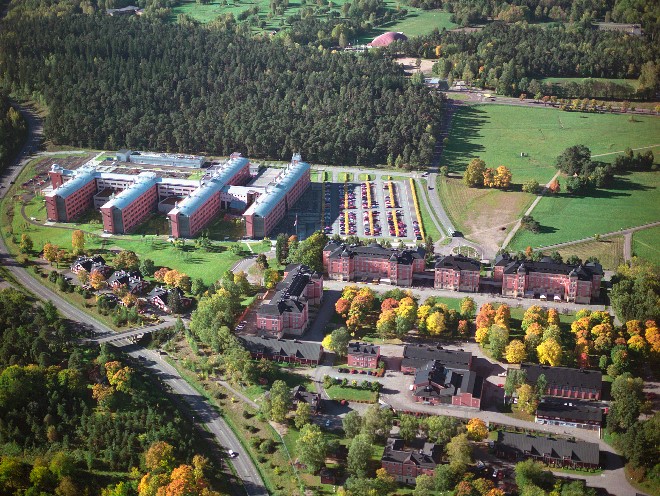
Figure 1: The Polacksbacken campus with the Ångström Laboratory to the left and ITC (located in the former barracks) to the right. The Polacksbacken meadow in the foreground.
Now, what activities could be suitable in the old barracks once ITC has moved to their new premises? Particularly, how can the university be an active and attractive component in the future urban fabric with, e.g., ~7000 new apartments in the Ulleråker area. The evolvement is complex since Polacksbacken is also surrounded by several recreational areas found to be of very high value, for example, the Kronåsen and Geijersdalen (Geijer’s valley) and the Kronparken forest, one of the oldest forests in Sweden.
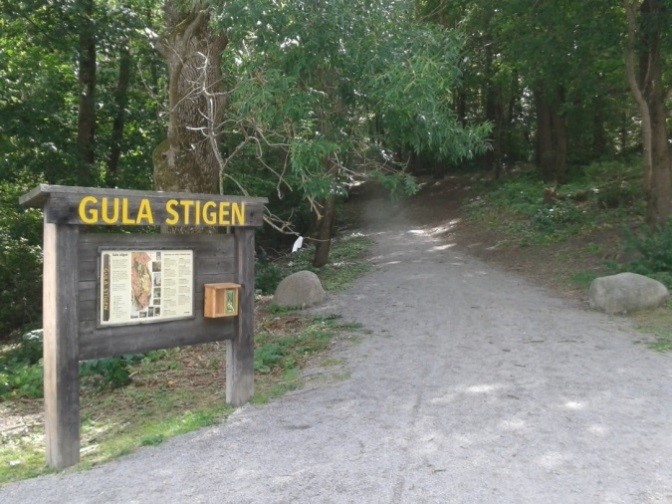
Figure 2: The north start of Gula stigen (the “Yellow path”), and an information board at the entrance of the Kronparken forest.
The spatial location of Polacksbacken makes it highly relevant from a number of different perspectives and concerns. In the near future it will become the geographical link between the new Södra staden and the city center of Uppsala. In political terms, we may therefore expect that the development of Polacksbacken attracts more aims, more ambitions and more concerns than the development of more isolated campuses. In institutional terms we may expect that the development of Polacksbacken will be contingent on a range of decisions within different jurisdictions and mandates, including planning authorities, real estate owners, research groups, existing and potential service providers in the area, tourism agencies, transport companies, etc. And in substantive terms we may expect that the development of Polacksbacken will confront a number of tricky issues where knowledge about the effects of different designs and strategies is uncertain and sometimes even disputed, i.e. how prioritizing buildings for outreach and R&D-activities with business affects long-term scientific quality. In short, in Polacksbacken we may assume that campus planning will become a miniature case of city politics where political prioritization, resource coordination and innovative knowledge facilitation need to be carried out in a context of strategic, institutional and substantive complexity.
In such a context of political, institutional and substantive uncertainty stakeholder identification and mobilization become crucial but also tricky issues. If a stakeholder is defined as any group or individual who can affect or is affected by the development of the campus area it should be obvious that stakeholder identification is by no means simple or self-evident. In the end it has to do with tracing power and the mechanisms of power. Below we try to illustrate the analytic task and its complexity.
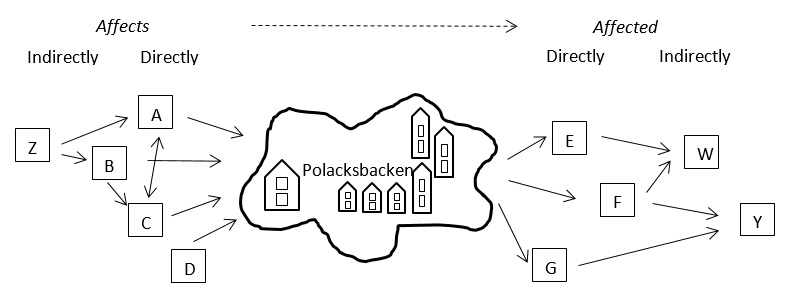
Figure 3: Directly and indirectly affecting and affected stakeholders
Drawing on an extensive overview of previous research, in the Polacksbacken case we develop a model for stakeholder identification and mapping from the assumption that knowledge about strategic interdependencies is a crucial condition for successful participatory planning and design. The development and test of the model is very much ongoing, and results and conclusions will be presented in due course within the collected published material of the Live Baltic Campus studies.
/Team Uppsala







